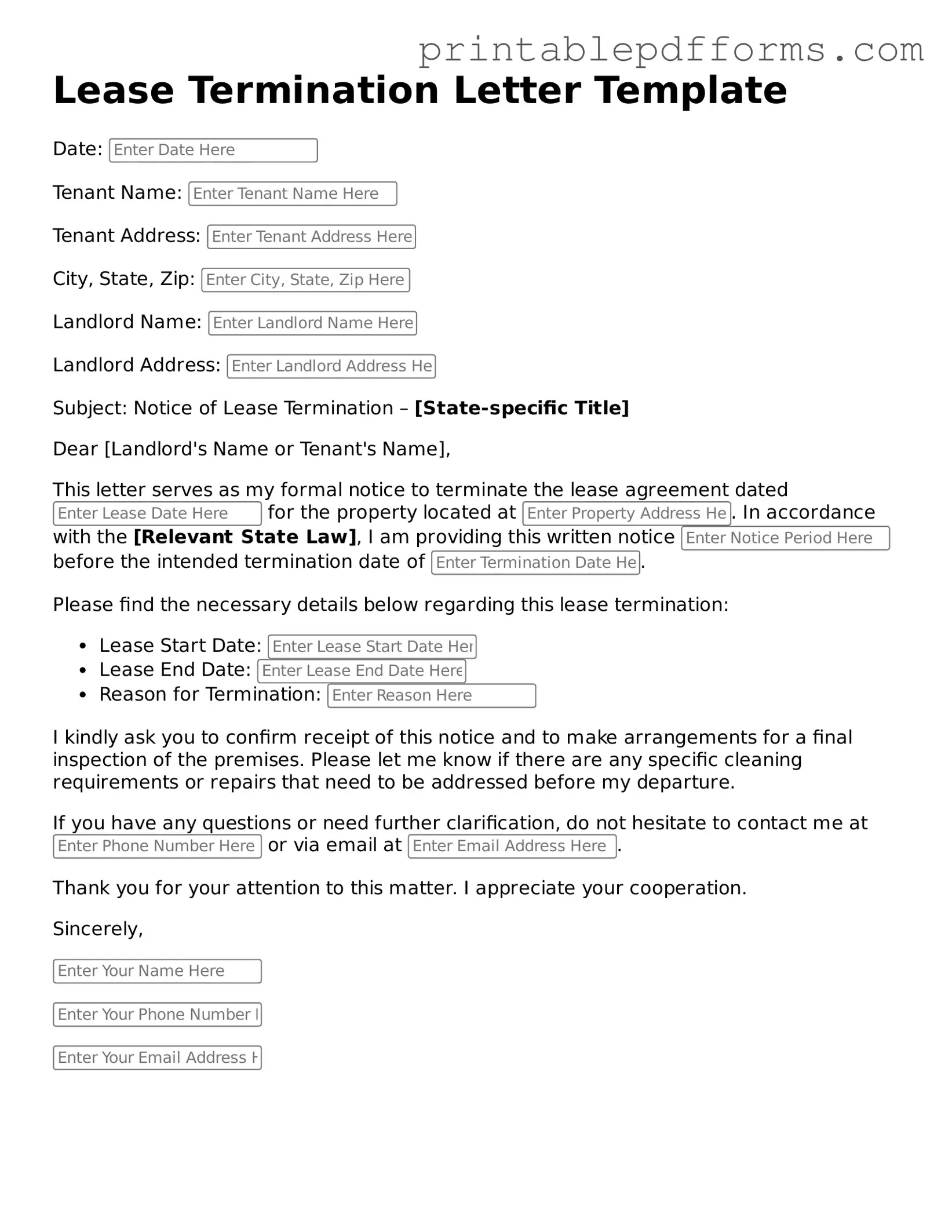Blank Lease Termination Letter Form
A Lease Termination Letter is a formal document used by tenants or landlords to notify the other party of the intention to end a lease agreement. This letter outlines the necessary details, such as the termination date and any final obligations. Understanding how to properly fill out this form is crucial for a smooth transition; click the button below to get started.
Create This Document Online
